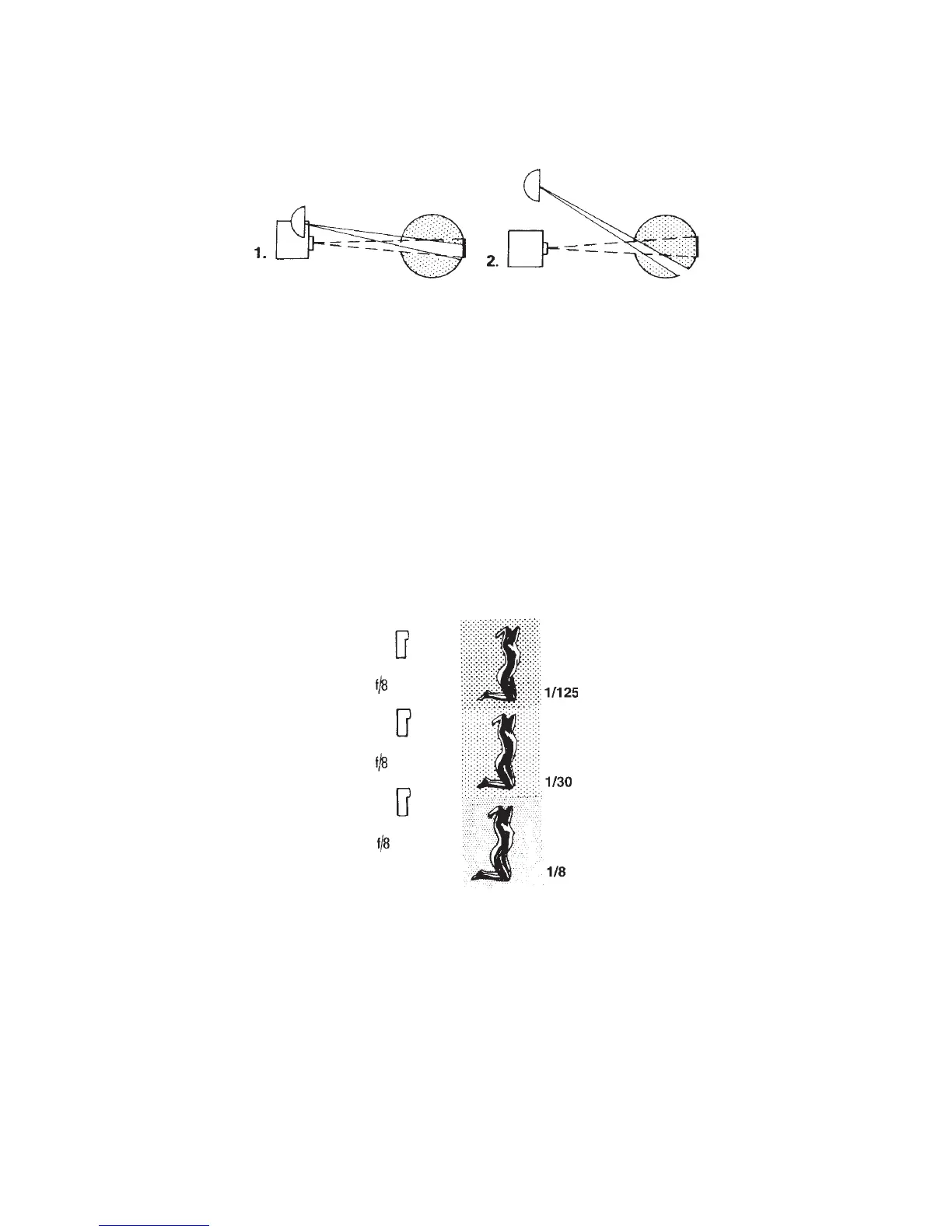336 THE HASSELBLAD MANUAL
A larger unit, perhaps with a separate battery pack, is recommended when a large number of
fl ash pictures need to be made requiring more battery power.
The brightness of portable units is indicated in guide numbers, which are based on the
ISO setting that is used. Most companies quote the guide number for 100 ISO. The guide
number tells you at what distances the fl ash must be used for the various lens apertures and
can also tell you the maximum working distance. Divide the guide number by the distance.
For a guide number of 42 and an 8 foot distance, the aperture is 5.2 (f/5.6) the maximum
distance for f/2.8 is 15 feet. Guide numbers are given either in feet or in meters, so you must
work with the same units for the conversion. At any distance, the fl ash exposure is deter-
mined by the lens aperture (see Figure 18-2) regardless of the shutter speed.
Figure 18-1 Red eye. (1) Red eye is caused by the fl ash light being refl ected off the blood-fi lled
retina. (2). You can avoid this by placing the fl ash farther from the camera lens so that the
retina is shaded.
Figure 18-2 Flash exposure. Because the fl ash duration is likely shorter than the shutter speed,
exposure for fl ash is determined only by the aperture. Exposure for the fl ash is the same at
any shutter speed within the shutter’s synchronization capability.
Flash Operation
Portable fl ash units can be made for manual mode, automatic mode, dedicated mode, or a
combination of the three. Modern units, including those built into cameras offer dedicated
operation the most logical approach to fl ash photography.

